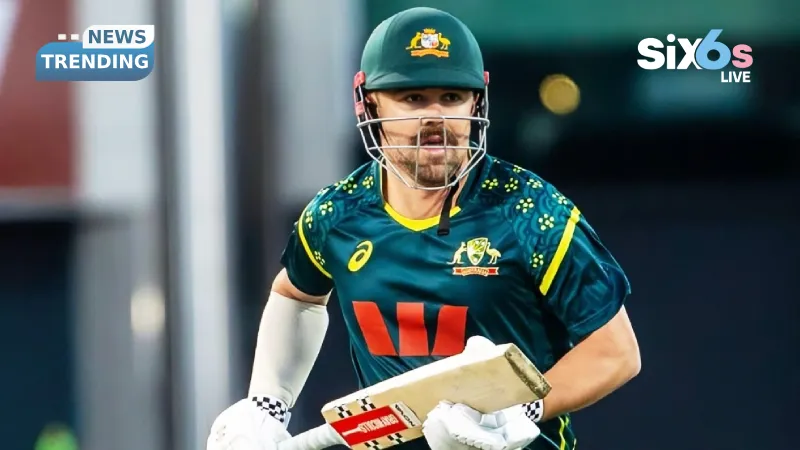A Travis Head mid-T20I Series exit may seem like a strange Cricket Headline; however, it is simply an indication of how the Australian chessboard is developing long-term. Following a lackluster stint in one-day cricket (his highest in that format was 31 from 8 innings since he scored 142 vs South Africa), Head will now leave behind the white ball and take up the Red Ball of the Duke’s as he moves directly into the Sheffield Shield competition with South Australia. This is not a downgrading; this is a statement.
Test Preparation Over T20 Glamour
Instead of trying to avoid poor form, Head’s invitation to play in South Australia before the Ashes is an attempt to get back into rhythm. Months of white ball cricket have taken a toll on his aggressive nature, and he needs to go back to basics with the red ball. Playing in the Sheffield Shield will allow him to do just that: longer innings, hard work, and a better understanding of his techniques.
This also reflects a broader philosophical shift in how Australia approaches cricket. In contrast with many other countries that choose to play bilateral T20s as a way to generate immediate momentum, Australia has historically allowed key players, particularly those who are regular test cricketers, to prepare for what is ultimately their higher priority, the test arena. Clearly, Head was aware of this when he gave himself the freedom to design his own schedule; he understood that his test cricket value is exponentially greater than his T20 results.
A Star-Studded Shield: The Perfect Dress Rehearsal
While this is Head’s individual training session, it has developed into a team practice. All of the Australian players who will be representing Australia in the first Ashes test, Josh Hazlewood, Mitchell Starc, Nathan Lyon, Steve Smith, Marnus Labuschagne, and Cameron Green, will have returned to domestic competitions before that first match. So the Shield has become an Australian A vs Australian A+ tournament.
Alex Carey will join Head in South Australia, while Beau Webster & Brendan Doggett will be representing Tasmania. Victoria, New South Wales & Western Australia have lineups looking much more like test trials as opposed to state teams. It is unusual and welcome to witness Australia’s top talent returning to first-class cricket; a tradition that has, for many years, provided an enviable model for other countries’ Test pipelines.
The Red-Ball Reset for Travis Head
The Test transformation of Travis Head is one of the most significant aspects of Australia’s modern-day batting since the 2021 Ashes. Since then, Head has averaged over 50 in Test matches and batted at an average strike rate greater than 80, which will define how fast batting will be done from the number five position. However, attack and counter-attack only work for a batsman when they are confident. Head may have lost this confidence after the white ball slump, which could have caused him to lose some of that instinct. In Hobart, Head has returned to the rhythm of red ball cricket and is starting to reset his muscle memory — by defending tighter, hitting later and attacking better.
Travis Head’s T20I withdrawal is not a retreat from the white ball format; it’s a redirection of his focus. The Australian team is aware that, though trophies in white ball formats may be placed on the mantlepiece, the Ashes will define this era. Travis Head’s return to the hard work of Shield cricket is symbolic of Travis finding his rhythm, as well as the Australian team reaffirming their values.
In essence, if the Ashes is the test, the Shield is the study group, and Travis has decided he wants to take additional tutoring rather than attending a party. With the current abundance of cricket taking place around the world, Travis’ decision may be one of the most intelligent decisions made recently in the history of the game.
Stay updated on the latest cricket news and exciting updates at Six6slive. Dive into our in-depth articles and analyses to connect with the action today!
